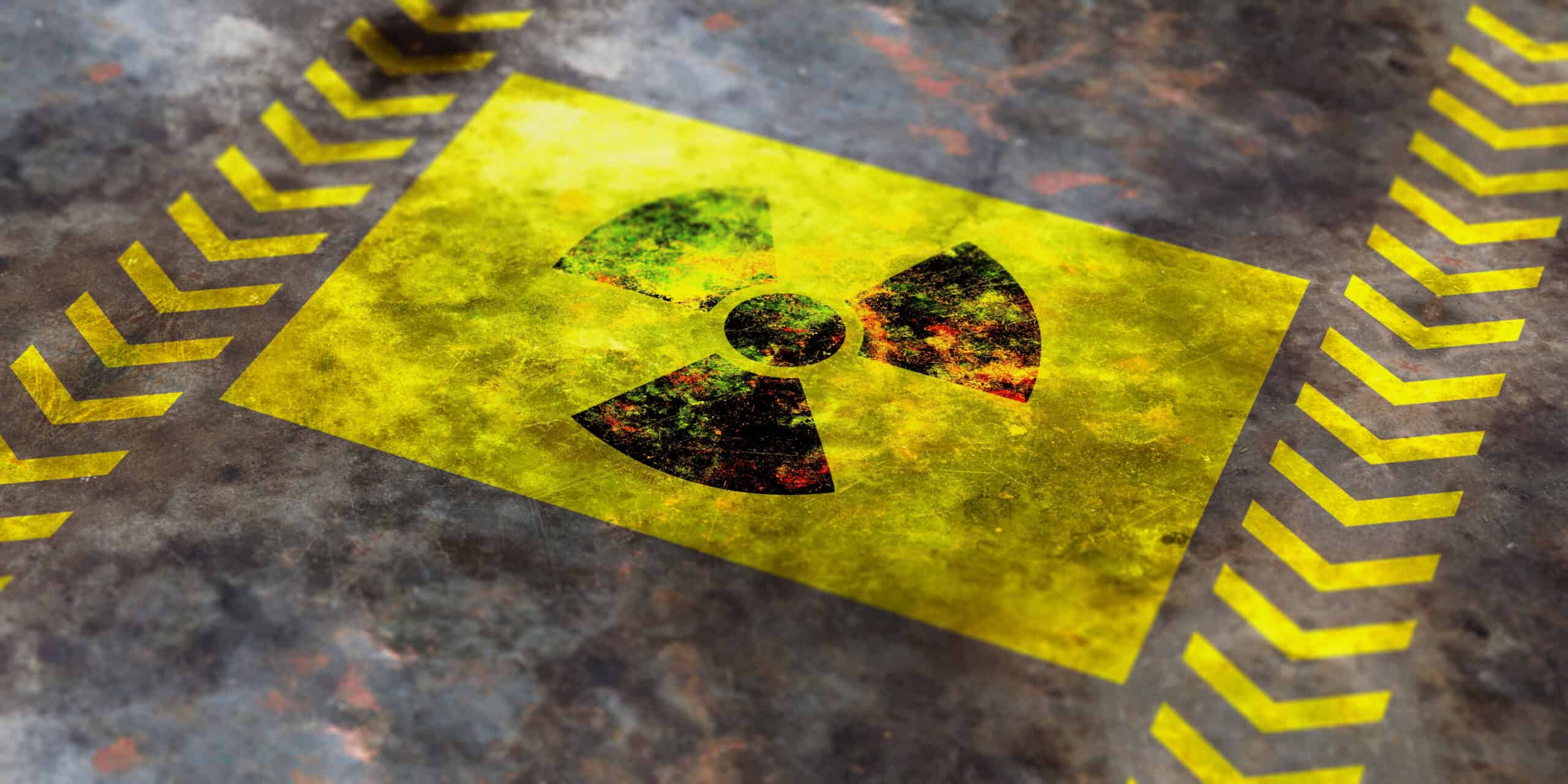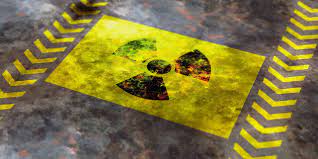As the nation is mesmerized by recent sightings of drone swarms up and down the East Coast of the United States, renewed concerns are emerging about threats not often considered since the early days of the Global Wars on Terror. Conventional threats such as Russia and China have dominated the news cycles, but between those two behemoths there is room for the terrorist to fit.
Some of the drones spotted off the East Coast are reported to be six feet across which is more than enough room for them to carry a dirty bomb into the United States unnoticed. A conventional explosive packed with radioactive material would send radiation levels soaring up and down the coast.
Using such drones as a radiological dispersal device (RDD) is at least an option a terrorist would consider and as such, it is a threat for which we must prepare. Here at MIRA Safety, we believe in preparing for threats before they are actually a threat. We don't know what these drones are off the East Coast, but we can still see the threat a mile away. What is a Dirty Bomb and Why is it a Threat? How Difficult Is It to Get Ahold of Radioactive Material? A Radiological Dispersal Device in the Age of Drones The Deadly Effects of Radiation Exposure on the Human Body The Nuclear Regulatory Commission and Nuclear Fact Sheet Prepping for When Dirty Bomb Information Hits the News The High Threshold for Use of a Nuclear Weapon versus an RDD Load Up on Potassium Iodide and Go to War Against Those Isotopes
Table of Contents
What is a Dirty Bomb and Why is it a Threat?
The device we're referring to is simply a conventional explosive packed with enough radioactive material to cause death, chaos, and confusion. It wouldn't be right to call it a weapon of mass destruction as it does not involve a nuclear chain reaction and massive amount of heat.
In fact, if you were in the vicinity of the initial explosion and walked away without a scratch, you would have oblivious health effects taking place right now. Unless you had one of our Handheld Geiger Counters, you would go on about your day until the radiation sickness began to set in.
It is not even apparent whether or not the authorities would test for radiological dispersion until people started getting sick. That makes you the canary pigeon in the mineshaft of this explosion. If we were anywhere near these drone swarms right now, we'd think $20 bucks for some Potassium Iodide pills is a pretty reasonable deal.
Source: Evakpak™ Survival Kit
How Difficult Is It to Get Ahold of Radioactive Material?
The Holy Grail for terrorism would be to obtain a nuclear weapon. Thankfully, that has proved difficult and we've not had to travel down that road yet. Unfortunately, radioactive sources capable of causing deadly radiation exposure are still quite common.
Radioactive materials are used in industrial concerns, medical facilities, and research throughout this nation. Among these include cesium-137, cobalt-60, iridium-192, and americium-241. Any one of these could be stolen for use in a dirty bomb and yes, this material gets lost and stolen with some frequency.
In January of 2023, a vial of cesium-137 fell off the back of a transport truck in Australia. It was never found. In Thailand, a piece of industrial equipment containing cesium-137 went missing. There have been numerous cases in the United States where americium-241 has gone missing.
A Radiological Dispersal Device in the Age of Drones
The proliferation of drone technology is going to prove one of the greater security challenges in the 21st century. We're already seeing in real time how they are being deployed by both sides during the war in Ukraine. Even the smallest drones are delivering explosive payloads.
However, if you have drones as big as six feet across like the ones being reported off the East Coast you could deliver one hell of a payload. At that size, the bomb could disperse enough radiation to cover entire neighborhoods in deadly isotope carnage.
However, it doesn't need to be that big. You could go to your electronic store right now and pick up a drone big enough to carry a stick of dynamite. Add a little cesium-137 and voila, you've got yourself a radiological dispersion device.
Moreover, as drone technology develops, the range of these drones and whether or not they can be piloted from a small boat in international waters is something we have to consider. That these drones could be powered by AI and operate autonomously is an even greater threat. 
Source: Pexels_Wassily_Kandark
The Deadly Effects of Radiation Exposure on the Human Body
The effects of radiation poisoning on the human body are nothing to be scoffed at. Generally, the ill effects are relative to the amount of radiation and the length of the exposure. In 1999, an incident at the Tokaimura nuclear fuel processing plant in Japan left an employee exposed to high amounts of radiation. You can read all about his story in our blog here.
When you are exposed to enough radiation, your DNA will actually begin to break down which prevents cell repair replication. This is cellular failure on a massive level. Your bone marrow is destroyed and blood cell production is halted resulting in anemia.
The gastrointestinal tract is damaged resulting in vomiting and dehydration. Skin suffers radiation burn and blisters with skin falling off leaving you open to infection. The end result is massive organ failure and death.
Again, the danger from a dirty bomb to the human body would be relative to the type of radioactive material, how close you were to the detonation and the length of your exposure to radiation. So, we're not saying you are going to melt if you are in the same city when such a device went off. We are saying that you need to be prepared for the worst.

Source: The_imaging_wire
The Nuclear Regulatory Commission and Nuclear Fact Sheet
Fortunately, or unfortunately, the United States government is much more transparent about nuclear energy than they are about what is happening with drones off of the East Coast. We've got plenty of data available to us as to what a dirty bomb would do to a major U.S. city.
We know it will cause severe illness, mass disruption, and the main purpose of a dirty bomb is to frighten people and cause fear and panic. A nuclear bomb creates an explosion and if you get enough of these, say goodbye to humanity.
No one is going to end humanity or take over the United States with a dirty bomb. However, what preppers need to know is that the dirty bomb's radiation could create an alternative prepping scenario where chaos and social order take a temporary hit.

Source: MIRA Safety
Prepping for When Dirty Bomb Information Hits the News
If you live in a major city, you're going to see mass chaos around when the story about radiation detection after an explosion hits the news. Remember, there is a good chance the authorities won't know until people start getting sick. When people start getting sick, the rest of the city will start to freak out.
More than likely, they are going to tell you to shelter in place. Depending on where you live, this could be good advice or bad advice. We encourage others not to rely on the authorities to tell you if radiation is in your vicinity.
We've got an entire line of decon and detection equipment so that you can be master of your own fate. Don't leave your survival up to the government in such a scenario. The detection equipment also helps if you are in a survival situation where sheltering in place is no longer an option.
If you have to move, you need to know if you are moving into an area near a radioactive source. Then, all prepping rules still apply. The longer the incident carries on the more scared people get. The more scared people get and they will become your greatest threat.

The High Threshold for Use of a Nuclear Weapon versus an RDD
What makes the idea of a dirty bomb so frightening is that we can envision a thousand more scenarios where it would be used as opposed to a traditional nuclear weapon. A nuclear explosion with a traditional nuclear device would likely set off World War 3. Most people want to avoid that so both sides stay away from such weapons.
However, a dirty bomb is a conventional weapon with the season of radioactive isotopes. In other words, the threshold for using such a weapon is much lower. There is not the same stigma that using such a weapon where the health effects of radiation will lead to the end of the world. Russia is rumored to have considered using them in Ukraine because they did not think it would trigger a nuclear response.
A rogue state or non-state actor has less to worry about. Islamic terrorists think they are going to heaven if they use it. Meanwhile, all rogue states have to do is simply avoid detection and drones are an excellent method of delivery to that end.
If Iran wants payback for getting their tails handed to them by Israel as of late, loading up a payload on a drone from using stolen cesium-137 from an x-ray machine is entirely doable. The drone delivers the payload and the bad actor never has to step foot inside the United States.
That's why we hope the explanation for the recent drone controversy is that the United States military is getting ready for such an attack. We hope this is one large exercise and that we will be the beneficiaries of all the current panic. We hope, but as you know, preppers don't traffic in hope. We prepare.
Load Up on Potassium Iodide and Go to War Against Those Isotopes
This is our conclusion and summary on what to do in the event one of these dirty devices is unleashed near you. Potassium Iodide is so cheap, we don't sell it as a money maker. We sell because everyone should have enough for their entire family and then some.
When the bomb goes off, you are at war with an unseen enemy. You have to assume the worst and that the day is coming when you will need this life-saving medicine. If you don't, great. However, you have to be ready for the day that most people dread.
Unfortunately, we feel that there is almost an air of inevitability before the detonation of a dirty bomb in an U.S. city takes place. There is just too much material out there and constructing a dirty bomb is just far too easy once that material is obtained. We've no choice but to prepare, but just know that we are committed to taking you along on that journey as well. Keep training friends and if you're on the East Coast, keep your eyes on the sky.
Frequently Asked Questions

